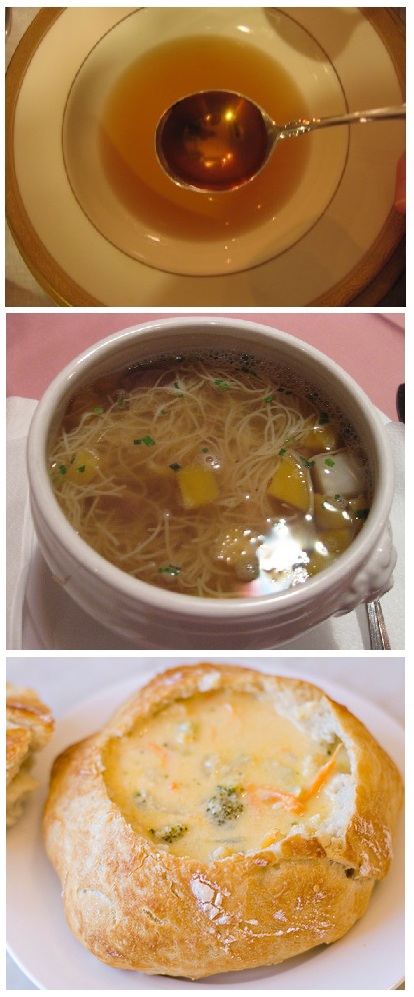Foods 2070 Lessons
Soups in cuisine
Lesson Questions
- What is the role of soups in cuisine?
- Identify types of soups, thickening agents and flavours.
Lesson
Our word soup comes from French soupe, which derived from Latin verb suppare, to soak, which indicated bread soaked in broth.The bread or toast served as an alternative to using a spoon and that evolved into croutons. Soup was a poor man’s dinner. Until recent times, the evening meal was the lighter of the two meals of the day; a soup or sop would be a typical evening dish. The name of the meal evolved to souper, than supper. It began to be fashionable to serve the liquid broth without the sop (bread), and in the early eighteenth century, soup became a first course
Types of soups:
- Clear soups
- a thin soup are made from a clear stock foundation. One way to distinguish them is that a consomme is always served plain (with an optional garnish), whereas broth can be made more substantive with the addition of a grain (corn, barley, rice) and vegetables. Plain broth is a thin soup, but it can be thickened with the addition of rice, potatoes, barley, vegetables or eggs. Examples with eggs include Chinese chicken egg drop soup, Greek avgolemono soup and Italian stracciatella soup.
- Thick soups
- classified depending upon the type of thickening agent used:
- purées are vegetable soups thickened with starch;
- bisques are made from puréed shellfish or vegetables thickened with cream;
- cream soups may be thickened with béchamel sauce;
- veloutés are thickened with eggs, butter, and cream.
- Other ingredients commonly used to thicken soups and broths include rice, lentils, flour, and grains; many popular soups also include carrots and potatoes.
Thickening agents:
- Roux
- Equal parts flour to fat (clarified butter is traditional). There are three different stages for rouxs including white, blond and brown. Full thickening power is not realized until sauce or soup is brought up to a simmer after the roux is incorporated. Constantly stir roux-thickened sauces while cooking to prevent lumps. If you must leave the sauce for a few seconds, set the pan off the heat during that time.
- Cornstarch
- Has twice the thickening power of flour. Most commonly added to a soup or sauce in a slurry form, using a 1:1 mixture of water to Corn Starch. To thicken a sauce or soup with the consistency of water to a traditional nape stage (coats the back of a spoon), you will need 2 oz of Corn Starch for every 1 qt of sauce or soup. Full thickening power will not be realized until your sauce begins to simmer. Corn Starch has tendency to give sauces a smooth and shinny appearance.
- Whitewash
- A mixture of water and flour is whisked together into a “slurry” before being incorporated into a sauce. The water helps to hydrate the starch molecules in the flour, preventing the flour from clumping when it hits the hot sauce or soup. This is a poor technique andis only listed here for sake of completeness
Flavouring agents:
- Mirepoix
- a combination of chopped carrots, celery and onions used to add flavor and aroma to stocks, sauces, soups and other foods. The proportions (by weight) for making mirepoix are 50% onions, 25% carrots and 25% celery.
- Bouquet garni
- is a bundle of herbs usually tied together with string and mainly used to prepare sauces & soups. It is cooked with the other ingredients, but is removed prior to consumption. Most recipes include parsley, thyme and bay leaf and include basil, burnet, chervil, rosemary, peppercorns, savory and tarragon.